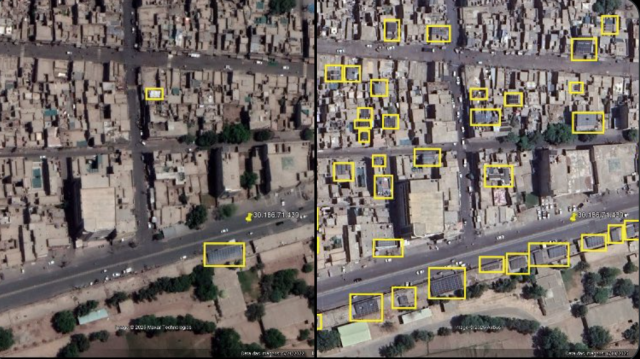Being rigged up with your own solar panels with battery storage & therefore not requiring to be link to the grid, is a utopia fantasy for many in the energy field, yet it appears to being achieved in Pakistan.

Yet it appears to being achieved in Pakistani cities, if one looks at their roof tops in recent years. Which not only helps achieves energy security and zero emissions for the country but also for the individual households as well. These Google Earth photos above of a neighbourhood in Multan well illustrates, if you look at the difference between 2022 and 2025 the take up of solar panels.
Pakistan is experiencing an unprecedented solar energy boom driven by economic factors like falling panel prices and high electricity costs, with solar power now accounting for over 25% of the nation’s electricity. This grassroots movement has made Pakistan the world’s third-largest importer of solar panels, a major shift from previous reliance on expensive, grid-based power. Leading solar panel brands in Pakistan include Jinko, Longi, Canadian and JA Solar, with many people choosing to install panels on homes and businesses to escape unreliable grids and high energy bills.
The key drivers of the solar boom are a number of factors – economic incentives, high
electricity costs and grid unreliability. The decreasing global prices for Chinese-
manufactured solar panels have made them affordable for many Pakistanis. Rising
prices for grid electricity make solar power a financially attractive alternative for
consumers. And finally the frequent blackouts and an ageing national grid lead many
Pakistanis to turn to solar to ensure a consistent power supply.
Thus we can see adoption of solar energy is largely a bottom-up movement by individuals
and businesses, not just large-scale projects. That it is a grassroots revolution for sure.
With its rapid growth of solar installations, solar is becoming the largest source of
electricity in Pakistan.
Now solar power accounts for over 25% of Pakistan’s total electricity production and this
shift in the energy share with its rapid movement, makes the national target aims to
have 60% of its electricity supplied by renewable sources by 2030, feasible in spite of
government, not by aid of it.
It just needs to also be rolled out to those without any energy source in rural parts
raising the issue of energy accessibility. Which refers to the ability of everyone to
reliably, affordably and sustainably access modern energy services, primarily electricity
and clean cooking facilities. which are vital for economic development, health, and
education. Progress is being made, but achieving universal access remains a challenge,
particularly in sub- Saharan Africa, with insufficient financing and insufficient rates of
